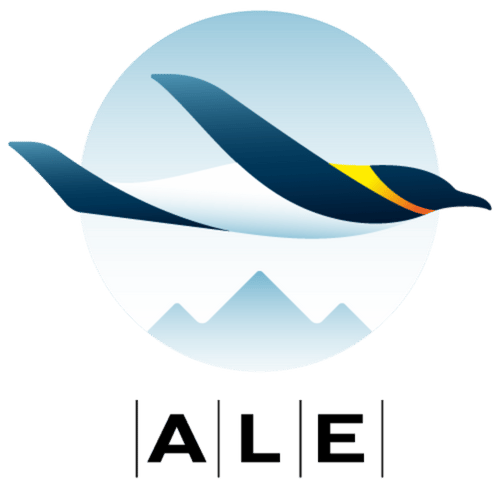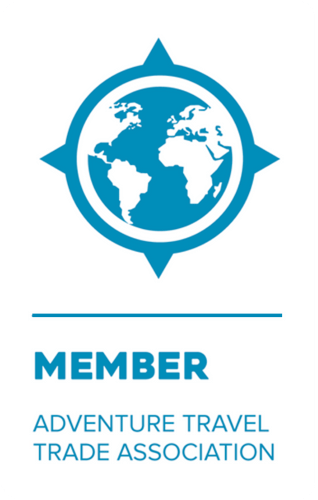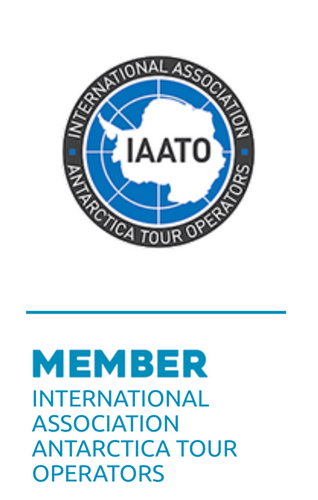Safety is our top priority and as the most experienced operator working deep in Antarctica we set a high safety standard.
Everything we do starts with creating a safe environment for our guests and our team. Antarctica is one of the most challenging places on the planet to operate due to its remoteness and harsh weather conditions. As a result, we are meticulous when it comes to logistics and safety protocols. All of our experiences whether technical climbing, ski routes, or private flights to the South Pole, start with detailed risk management and contingency plans.
Prescreening
Everyone that travels with us goes through a medical review and must be pre‐approved by our Medical Director before they can journey to the ice. Guests that will be participating in technical excursions are asked to provide a skiing or climbing resume so our mountain and expedition managers can review their skillset and ensure they are prepared for the physical demands of their chosen adventure. We may ask a guest to complete additional training before they travel to Antarctica or extend their stay so we can train them on the ice.
Travel Safety
Union Glacier is a large expanse of actively moving snow and ice that is flowing from the Polar Plateau towards the Ronne Ice Shelf. As the glacier carves its way through the mountains and flows over uneven terrain, deep holes and cracks can form in the surface of the snow. These crevasses can be hundreds of feet deep and are often covered by a thin layer of snow, making them very dangerous. We assume all glaciated terrain contains hidden crevasses unless surveyed and designated safe by our Travel Safety Team.
We use a variety of tools to identify safe areas around Union Glacier and our field camps. These include high resolution satellite imagery, ground penetrating radar, a thorough understanding of glacier dynamics, and historical knowledge of the area. Our camp boundaries and safe travel routes are routinely maintained and clearly marked to ensure safe passage in low visibility. Our Travel Safety team gives regular briefings to guests and staff on where it is safe or not safe to travel.
All guests and staff must adhere to a strict Check-Out and Check-In Procedure when leaving camp and be cleared by our Travel Safety Manager. Guests and staff must stay on established safe routes outside of camp or employ glacier travel techniques (ropes, harness, etc.). Our Communications staff must be notified before crossing the skiway to use the 6 mi (10 km) loop. There may be other aircraft in the vicinity, even if all of our aircraft on the ground.
Guiding
We’re proud to employ one of the best guiding teams in the world. We seek out guides who are extremely experienced and have very strong technical skills. They are passionate about sharing their experience of the wilderness with our guests in order to create a safe and unforgettable experience. When hiring our mountain guides, we look for high grade mountaineering ability and cold weather experience ‐ we like to see many years of guiding on high and cold mountains before we take them on. Our polar ski expedition guides have many years of experience working in the Arctic and Antarctic and many have undertaken their own expeditions in the polar regions.
Although field experience is paramount, we also take into account certifications. Several of our mountain guides have the full IFMGA carnet and many others hold national qualifications from their relevant countries (e.g. AMGA, MIC, UIMLA etc.). In addition, our guides hold other relevant certifications, such as avalanche safety, industrial rigging, search & rescue and advanced first aid. Along with climbing and skiing skills, many of our guides bring experience as paramedics, EMTs, rescue technicians, heli‐ski guides, and IT/communications specialists. All guides are required to have Wilderness First Responder certification and can be asked for additional credentials based on their given field assignment.
Our guides’ skills are continually put to the test due to the challenge that Antarctic conditions present. Their level of experience is unparalleled in the region with multiple polar records, over 42 Everest summits, and many first ascents on their resumes.
Mount Vinson Safety
The safety concerns on Mount Vinson are similar to any other high and cold peak but they are multiplied significantly by its remote location. As a result, we concentrate on preventing incidents before they require emergency response. All guests are required to be medically cleared by our staff doctor. Guests being guided by ALE also have their climbing resume reviewed by our Mountain Manager before they can reserve their space on a Vinson departure. It is not uncommon for us to require guests to complete additional training before they travel to Antarctica or extend their stay so we can train them on the ice.
Before we start the climb, the guides do a ‘shakedown’ trip on one of the local hills around Vinson Base Camp. This allows us to assess the pace, identify technique issues, and formulate the best plan for the group based on individual climbers’ needs.
For guests that choose to climb with another guide company, our authorization to operate requires us to make sure those companies are competent to operate in Antarctica. We employ a due diligence process to verify the experience of the guide company and the guides themselves before we agree to provide logistical support and access to Mount Vinson for their group.
On the mountain, we maintain a well‐developed system of camps, caches, fixed ropes and radio repeaters that give us a virtual ‘handrail’ from base camp to the summit. We maintain three rescue caches that includes litters, toboggans, oxygen, lowering gear, a portable altitude chamber, extra clothing, and sleeping bags. In addition to the guided teams on the mountain, we have ALE Rangers who roam the mountain providing back‐up as well as monitoring for crevasse, serac, & avalanche hazards. We don’t allow guide to client ratios greater than 1:5 and we do not allow solo climbers on the mountain.
Since 2006, ALE guided guests have maintained over a 98% success rate. Since operations began on Vinson in the 1980s, there has never been a fatality on Mount Vinson and we aim to keep it that way.
Safety Tips for Guests
- Bring everything on the required clothing & equipment list for your experience. The most common injuries in polar environments are cold related. Our equipment lists are field tested and explain the best layering methods for the Antarctic environment.
- If you take medication, bring enough with you for your Antarctic itinerary plus an additional 4 weeks’ supply. Even in Punta Arenas, compatible prescription medications can be difficult to source.
- Listen to safety briefings and follow instructions. You are in an unfamiliar environment and a long way from advanced medical care. Use common sense and stay well within your limits at all times. Ask if you have any questions.
- Stay with your group and do not wander from camp. Weather can change suddenly. Snow covered areas may hide crevasses.
- Be especially careful on blue ice, snow slopes and steps. Ice and snow surfaces can be slippery.
- Drink plenty of fluids. You can easily become dehydrated in the cold dry air.
- Enjoy our hearty meals and delicious desserts. Your body needs the calories to keep warm.
- Keep skin covered in cold and windy conditions to prevent frostbite. Wear gloves when taking photos or handling equipment. Use a balaclava, scarf or face mask.
- Wear high quality sunglasses or goggles at all times outdoors. Apply sunscreen liberally.
- Use antiseptic hand-gel provided in the washrooms and dining hall to prevent the spread of germs.
- Tell our medics or your guide immediately if you feel unwell or have a problem. Many issues are easily resolved if they are addressed early, but can become serious if ignored.



